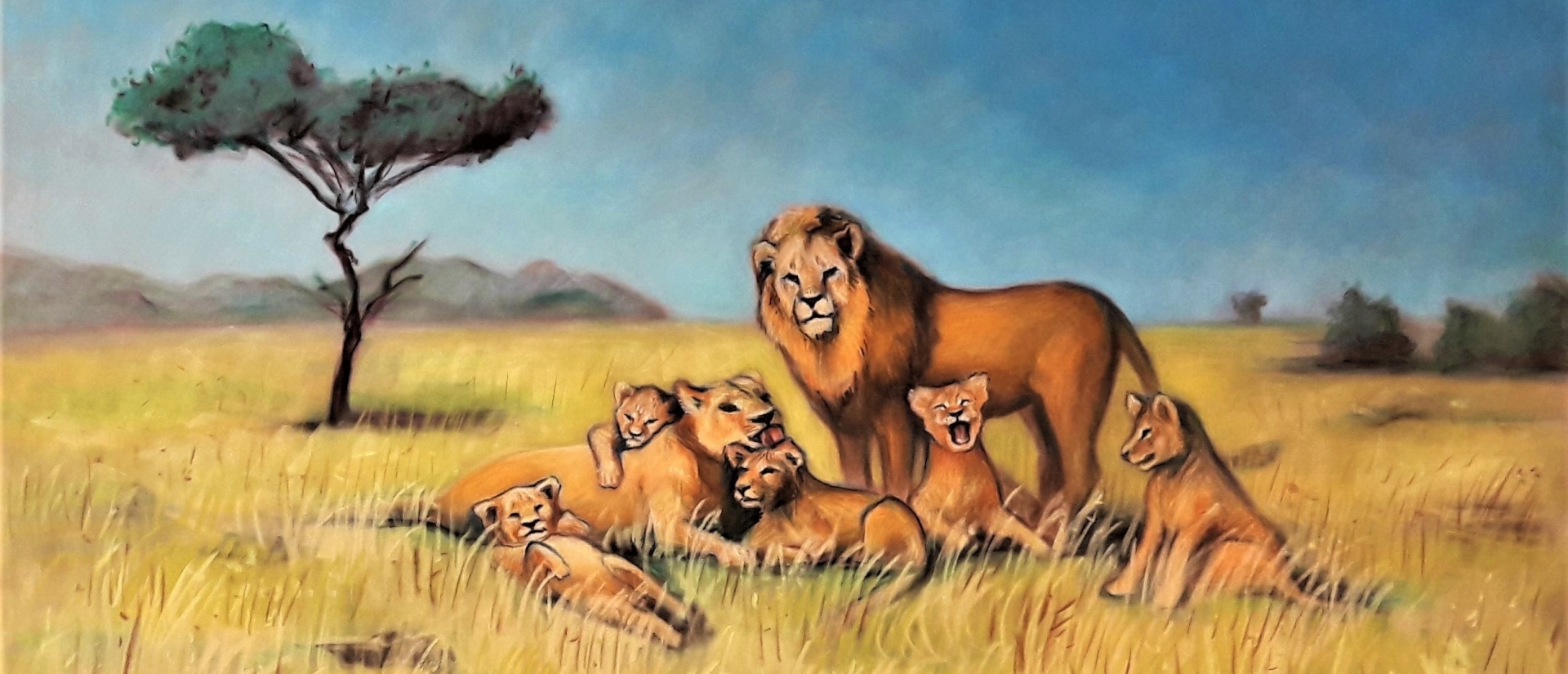
Without learning you won’t be able to make even a bast sandal.← Back
Russian proverb
Kazimir MALEVICH - Red Cavalry

The best well-known Russian avant-garde artist at the end of his life created a strangely tragic painting which makes you shiver. “Red Cavalry” – one of his most expressive works – hides many riddles.
Undoubtedly the whole art of Kazimir Severinovich Malevich (1879-1935) is filled with avant-garde philosophy. He blasted the artistic minds in the beginning of the 20th century having created a brand new geometrized system of painting and thus becoming the founder of suprematism – a totally new abstract movement in arts.
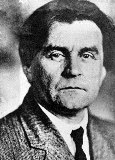 |
| K.Malevich. 1916 |
This painting of Malevich is quite different from his black, red and white squares, circles and crosses, rich in deep sense and symbolism. But here, too, the outer form conceals paradoxical inner meaning. All the life of Kazimir Severinovich was full of contradictions and puzzles.
To start with, the painter claimed that he was born in 1878, but historians have found document proof that he was born in 1879. Why add one more year to his age? And the stories of dating his works raise even more questions. In this picture “Red Cavalry” the canvas on the front side is marked with 1918, but specialists are sure that this painting was created at least a decade later. And there are many examples when Malevich on purpose changed datings in order to polish his biography according to a specific logic.
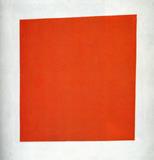 |
| K.Malevich. Red square. Pictural realism of a peasant woman in two dimensions. 1915 (53x53cm, oil on canvas) Russian State Museum, Saint-Petersburg |
Malevich’s fantasy allowed him to go beyond the ordinary limits and to become a philosopher pioneer. The names of some of his works are remarkable. Here for instance you see his “Red square” which in the catalogue of the exhibition in 1915 was named “Painterly Realism of a Peasant Woman in Two Dimensions”. There’s much to think about.
The situation with this painting which is called shortly “Red Cavalry” is quite complicated. The full name of the work is long and rhymes in the original Russian language: “Red Cavalry races from the October capital to defend the Soviet borders”. I suppose that such a name saved this work. Because when in 1926 the authorities started to persecute Malevich, “Red Cavalry” was his only abstract work which was accepted by the Soviet government. According to art historians the painter created this work around 1928-1932, so much later than the date indicated by the author.
According to the name and the first impression this painting celebrates the events of the October revolution in Russia. But very quickly you get a feeling of tragedy, of emptiness. And such a cheap popular name makes you search for a deeper sense of the work.
If you take a close look at the paining you will notice that the three main elements (sky, earth and men) are perfectly balanced. Each element is significant in its own way and thus the whole composition is steady. The sky is heavy – the surprising transition from clear white to mystical black, the materiality of the earth painted in contrasting stripes, and the cavalry itself although is very small, but bright red.
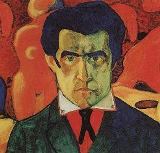 |
| K.Malevich. Autoportrait. 1910-1911 (27x27cm, gouache on paper) State Tretyakov Gallery, Moscow |
Probably Malevich aimed to show that sky, earth and men should counterbalance each other, be united like soul body and the spiritual energy. To my mind the theme of harmony in this paining is most important. Not for nothing did Malevich choose the format of absolutely exact “golden section” when the ratio of earth to sky and sky to the whole equals 0.618.
Talking about numbers you can count 12 colours in the patchwork of the earth. The horsemen are also structured in three groups of four in each row. Was this done on purpose? Very likely this number meant something special to Malevich. Instantly we remember the 12 Apostles, 12 months and the 12-years zodiac cycle in the oriental religions, 12 semi-tones in an octave and so on. In numerology the number 12 has a very strong energetic: great plans, idealism, perception of the laws of life and at the same time betrayal, confusion of moral and ethical qualities, intricate ambivalent situations.
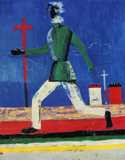 |
| K.Malevich. Running man. 1932-34 65x79cm, oil on canvas) Centre Pompidou, Paris |
So what was going on in the artist’s head when he was painting this work? Did he really glorify the revolution and justify the civil war that spread like a bloody river over the country? Or did he see in what was happening the breach of natural order and unavoidable later punishment? Indeed, you can interpret the direction of the cavalry as victory of the left-wing, and at the same time the composition rules say that any movement to the left is going back, slowing down, weakening, pointlessness of the dynamic. Did Malevich believe in the future of the Soviet country? Take a look at one more painting of the same period – “Running man”. Is the man running to or from?
To my astonishment I found an interesting article of a French historian who is sure that Malevich created “Red Cavalry” to express his hatred of the authorities that were crushing him, having disguised his painting with a resonant name. Philippe Videlier has proof that for inspiration for this painting Malevich used a nice old photograph from the press showing a vanguard of… White cavalry!
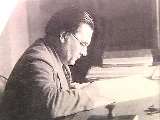 |
| Malevich - theorist working at his desk |
Paradox, but I believe that this would be in Malevich’s style. The painter should have really hated the Soviets. Because the moment when he was strong and full of ideas, after a tremendous success in the past years, he was suddenly called a formalist and a mystic. They ceased to print his articles, fired him from the post of Director if the Institute of Research of the Culture of Contemporary Art, and closed the institution itself. The disgraced artist left for Ukraine, organized several popular exhibitions abroad. But he was forced to come back, was arrested, accused of espionage and taken to prison for several weeks. At the age when most artists achieve acknowledgement and work with full-force Malevich found himself in an atmosphere of social isolation and soon died of a painful illness, in poverty and oblivion.
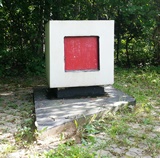 |
| K.Malevich's tombstone near Nemchinovka, Moscow region |
Today Malevich is one if the most famous avant-garde artists whose works are bought at auctions for incredible sums. In the public opinion he is a cult painter who has changed the course of the history of fine arts. And, to give him due, he left beautifully like a real artist. To his will his body after death was placed in a suprematic coffin in form of a cross and it was cremated. The cinerary urn was buried under his favourite oak-tree just outside of Moscow. Above his grave near Nemchinovka village there was mounted a wooden cube monument. Unfortunately during the World War II the real grave was lost. Its placement was determined only in the 80s and there was already an arable. So the new commemorative sign was placed at some distance. Now it is a white concrete cube with a red square.

